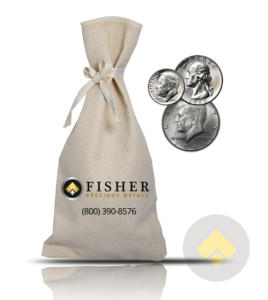Throughout history, various commodities have served as money, facilitating trade and economic transactions. One of the most enduring and influential of these has been silver. From ancient civilizations to modern economies, silver has played a crucial role in the development and evolution of monetary systems. This article explores the journey of silver as money, delving into its historical significance, attributes, and the reasons behind its widespread adoption.
Origins of Silver as Money: The adoption of silver as money can be traced back to ancient times, where its intrinsic properties made it an ideal medium of exchange. Unlike perishable goods or other commodities, silver possessed qualities such as durability, divisibility, portability, and fungibility, making it highly suitable for use in trade. The earliest known silver coins date back to around 600 BCE in Lydia, an ancient kingdom in present-day Turkey, where silver was mined abundantly.
Role in Ancient Civilizations: Silver played a pivotal role in the economies of ancient civilizations such as Mesopotamia, Egypt, Greece, and Rome. In these societies, silver coins served as a standard unit of value, facilitating commerce and enabling economic growth. Its widespread availability and recognizable properties made it a preferred medium for transactions, both large and small.
The Influence of Silver Empires: The emergence of vast silver empires further solidified its status as money. One notable example is the Spanish Empire’s exploitation of silver mines in the New World during the 16th century. The influx of silver from mines like Potosí in present-day Bolivia fueled global trade and contributed to the rise of Spain as a dominant economic power. Similarly, the Silk Road facilitated the exchange of silver across Asia, connecting diverse cultures and economies.
Silver Standards and Monetary Systems: As economies evolved, silver became integral to the establishment of monetary standards. Many countries adopted silver standards, where the value of their currency was linked to a specific weight of silver. This provided stability and confidence in monetary transactions, fostering economic growth and international trade. The British pound sterling, for instance, was originally defined as a certain weight of silver, establishing it as a benchmark currency for much of the world.
Decline and Resurgence: Despite its long-standing prominence, the use of silver as money declined in the 20th century with the rise of fiat currencies and the abandonment of the gold standard. Governments shifted towards paper money backed by faith in the issuing authority rather than intrinsic value. However, silver has experienced a resurgence in recent years as investors seek alternative assets and stores of value. The demand for silver coins, bars, and bullion has increased, driven by concerns about currency debasement and inflation.
Conclusion: The journey of silver as money reflects its enduring appeal and intrinsic value throughout history. From its origins in ancient civilizations to its role in shaping global economies, silver has stood the test of time as a reliable medium of exchange. While its prominence may have fluctuated over the centuries, the allure of silver as a store of value and hedge against economic uncertainty remains undiminished. In an ever-changing financial landscape, silver continues to shine as a symbol of stability and resilience.



